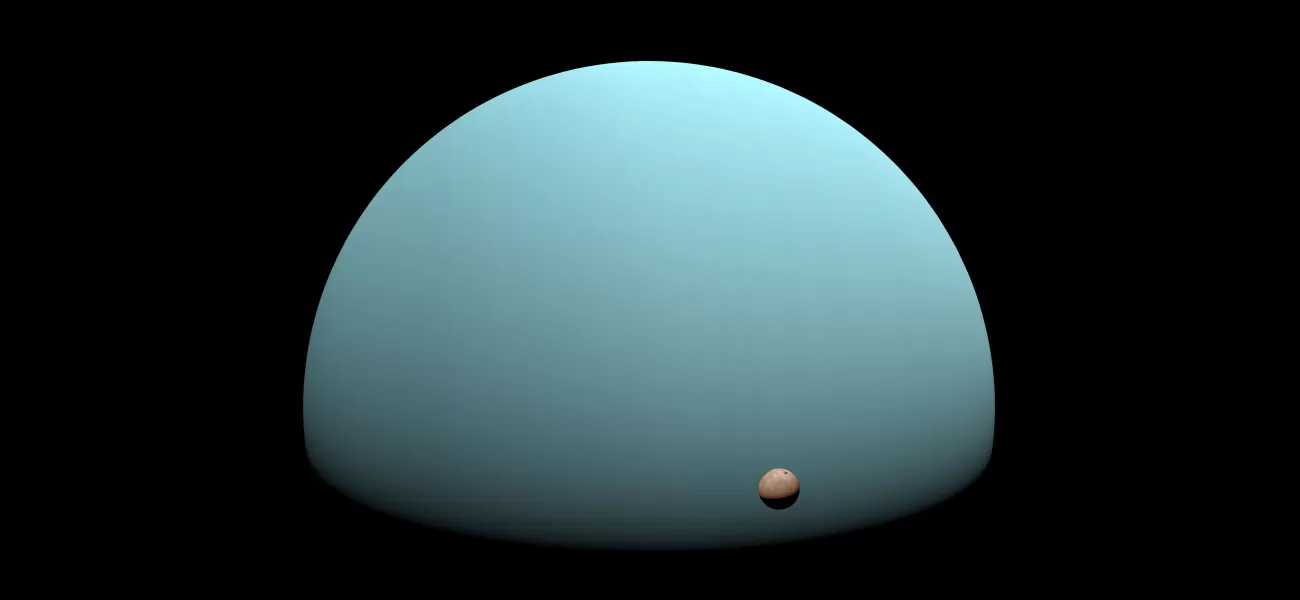Uranus surprised us with an unusual moon display.
No probe necessary to locate it.
February 26th 2024.

The solar system never ceases to surprise us with its hidden treasures. Recently, astronomers have discovered a new moon orbiting Uranus, making it the 28th moon to be found circling the distant planet. What's even more amazing is that this discovery was made without the use of a probe, thanks to the powerful lenses of two telescopes on Earth.
But Uranus isn't the only one keeping secrets. Its neighbor, Neptune, has also revealed two new moons, bringing the total number of natural satellites in our space patch to an astonishing 294. It's clear that our understanding of the outer planets is constantly evolving, and with these new discoveries, we can only imagine what else is waiting to be uncovered.
The new moon found orbiting Uranus is quite small, measuring only five miles in width. However, it takes a whopping 680 days to complete one orbit around its host planet, which is significantly longer than our own moon's 27-day orbit. At the moment, it goes by the uninspiring name of S/2023 U1, but it will soon be given a new name inspired by a character from Shakespeare, in keeping with the tradition of the other moons around Uranus.
Not to be outdone, Neptune has revealed two new moons of its own. The brighter of the two is approximately 14 miles wide and takes about nine years to orbit around Neptune. The fainter moon is eight miles wide and has a much longer orbit of 27 years. These two new additions bring the total number of known moons around Neptune to 16, and they will soon be given permanent names based on sea gods and nymphs from Greek mythology.
The discovery of these new moons was no easy feat. It required capturing dozens of five-minute exposures over several nights and stacking them together to create a deep image. As Dr. Scott Sheppard, a staff scientist at Carnegie Science, explains, this method allows for the detection of moving objects, such as the newly discovered moons, amidst the background noise of stars and galaxies.
All three of these new moons have egg-shaped orbits that align with the plane of their respective ice giants, suggesting that they were pulled into orbit by the planets' strong gravitational pull. It's a reminder of the complex and dynamic nature of our solar system, and it's a testament to the tireless efforts of astronomers around the world who continue to unravel its mysteries.
But Uranus isn't the only one keeping secrets. Its neighbor, Neptune, has also revealed two new moons, bringing the total number of natural satellites in our space patch to an astonishing 294. It's clear that our understanding of the outer planets is constantly evolving, and with these new discoveries, we can only imagine what else is waiting to be uncovered.
The new moon found orbiting Uranus is quite small, measuring only five miles in width. However, it takes a whopping 680 days to complete one orbit around its host planet, which is significantly longer than our own moon's 27-day orbit. At the moment, it goes by the uninspiring name of S/2023 U1, but it will soon be given a new name inspired by a character from Shakespeare, in keeping with the tradition of the other moons around Uranus.
Not to be outdone, Neptune has revealed two new moons of its own. The brighter of the two is approximately 14 miles wide and takes about nine years to orbit around Neptune. The fainter moon is eight miles wide and has a much longer orbit of 27 years. These two new additions bring the total number of known moons around Neptune to 16, and they will soon be given permanent names based on sea gods and nymphs from Greek mythology.
The discovery of these new moons was no easy feat. It required capturing dozens of five-minute exposures over several nights and stacking them together to create a deep image. As Dr. Scott Sheppard, a staff scientist at Carnegie Science, explains, this method allows for the detection of moving objects, such as the newly discovered moons, amidst the background noise of stars and galaxies.
All three of these new moons have egg-shaped orbits that align with the plane of their respective ice giants, suggesting that they were pulled into orbit by the planets' strong gravitational pull. It's a reminder of the complex and dynamic nature of our solar system, and it's a testament to the tireless efforts of astronomers around the world who continue to unravel its mysteries.
[This article has been trending online recently and has been generated with AI. Your feed is customized.]
[Generative AI is experimental.]
0
0
Submit Comment





